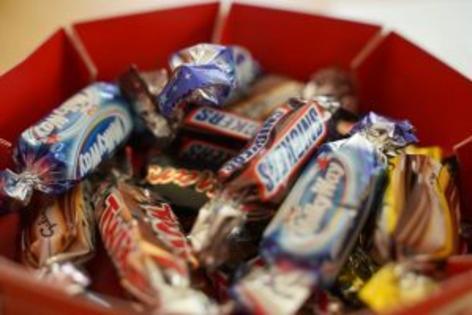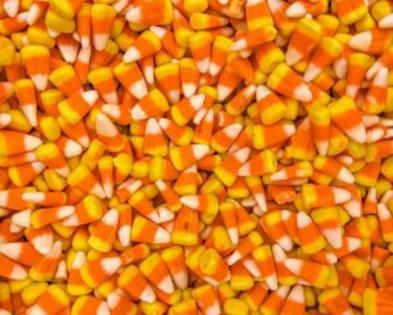Cannabis In Candy And Other Halloween Myths
Published in Cannabis Daily
Debunking cannabis in candy and other Halloween myths: what parents really need to know
Curious about the cannabis in candy and other Halloween myths? Every autumn, a familiar rumor surfaces on social media and in group texts: “Someone’s handing out weed candy to trick‑or‑treaters.” But here’s the short version: no credible evidence supports the claim. What’s actually going on is a modern twist on a long history of candy‑tampering folklore. Long before cannabis entered the public conversation, concerns about Halloween treats were dominated by tales of razor blades hidden in apples, pins in chocolates, or poison in candy. Those fears are largely urban legend. Where did it start? By the late 19th and early 20th centuries, as candy production grew industrial, some doctors and commentators began warning food adulteration was a hidden menace. The shift from small‑scale confectioners to mass manufacturing fueled distrust of what lurked inside sweets. In 1959, a California dentist, Dr. William Shyne, distributed laxative pills to trick‑or‑treaters in candy coatings—more prank than poison, but it entered the lore.
In 1970, a New York Times op‑ed asked whether the “plump red apple” might conceal a razor blade, feeding parental fear. The most infamous case came in 1974, when an 8‑year‑old in Texas died after consuming a Pixy Stix laced with cyanide. But the twist is the child’s own father, Ronald Clark O’Bryan, was convicted—and later executed—for planting the poison to camouflage a murder as a “random” trick‑or‑treat crime. Folklorists like Joel Best have traced dozens of reports of candy tampering from 1958 to 1983; but after investigation, none could be confirmed as a stranger’s random act of harm. Many turned out to be misattributed, hoaxes, or even children themselves adding dangerous objects and calling attention to it. Over time, the razor‑blade apple myth became a cultural shorthand for parental anxiety. Ironically, apples were once common Halloween treats (candied or caramel apples). But the myth contributed to their decline as mass “give‑aways.” The razor blade story is far from the only tale in the haunted folklore of Halloween sweets. Some of the persistent legends include: Needles or pins in candy bars: Occasionally reported, but often traced to local pranks or “copycats” rather than sinister strangers.Poisoned candy or drug‑laced treats: Tales of cyanide, lye, or drugs in sweets persist. But documented cases of poisoning via “random Halloween candy” are effectively non‑existent.“Blue star” lollipop tattoos or poisoned tattoos: A variant rumor claims temporary tattoos handed out include psychoactive or toxic compounds—another version in the “urban legend about drugs” canon.Mass poison scares tied to other events: For instance, after the 1982 Tylenol poisoning scandal (cyanide in over‑the‑counter pills), public fear of tainted consumables spiked—including Halloween candy warnings.These legends flourish because of what folklorists call availability cascade—when a vivid fear is repeated often, people assume it must be true.
So where did the weed candy myth come from? It’s essentially a new costume draped over an old scare. As legal cannabis markets have emerged, the idea someone might hide THC or marijuana edibles in trick‑or‑treat bags has gained traction online — yet it fails under scrutiny: No documented cases. No credible report shows strangers distributing cannabis treats to kids on Halloween.Cost is prohibitive. Legal THC edibles are expensive under regulation and taxation—handing out full doses to many kids isn’t cheap.Strict regulation and packaging. Dispensaries are required to use child‑resistant packaging, labeling, and maintain records—anonymously distributing to random children would breach every rule.Severe legal risk. Distributing THC to minors is criminal; any plausible motive is overshadowed by the consequences.Counterfeit vs. real product confusion. Some rumors mix in fake or illegal edibles mimicking mainstream candy, creating fear, but they are not part of regulated cannabis commerce.Derived from older tampering myths and amplified by digital echo chambers, the cannabis candy scare is a modern variant—but one without substance. A practical Halloween safety checklist might include: supervise routes, cross at well‑lit streets, have children wait until home to open candy, discard unwrapped or suspicious items, and of course, check for choking risks or allergens. The myth someone is secretly giving cannabis candy to unsuspecting trick‑or‑treaters is more frightening than factual. It’s a modern reincarnation of a much older folklore of tainted treats, one built on fear, not evidence. The razor in the apple may be a chilling image, but it remains a legend, not a reality. This Halloween, the real risk is not a phantom dose of THC—but a car, a broken sidewalk, or too much sugar. Let’s protect kids with real caution, not ghost stories.
The Fresh Toast is a daily lifestyle platform with a side of cannabis. For more information, visit www.thefreshtoast.com.



























Comments